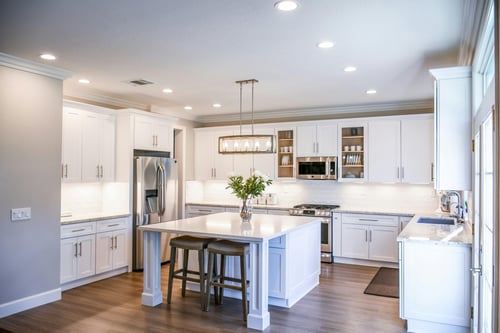Staging a home is much more than just decorating or making a space look attractive. It's about creating an environment that evokes emotions, highlights the home's strengths, and helps potential buyers envision themselves living there. Leveraging the psychological aspects of staging can significantly impact the sale process, often making the difference between a house that lingers on the market and one that sells swiftly at a desirable price. Let's explore some psychological tricks and tips that can transform any space into a buyer's dream.
The Psychology of First Impressions
First impressions are crucial in real estate transactions. The initial feeling a potential buyer gets when they walk into a home can set the tone for their entire visit. To make a positive first impression, ensure the entrance is clean, well-lit, and welcoming. A touch of greenery, such as a potted plant or a vase of fresh flowers, can add life and warmth to the space, subconsciously signaling care and attention to detail.
Color Psychology in Home Staging
Colors have a profound impact on our emotions and can influence perceptions of a space. Neutral colors like beige, gray, and white are universally appealing and can make a room feel larger, brighter, and more inviting. However, adding strategic pops of color through accessories such as pillows, artwork, or decor can add character and warmth to the space. For instance, blue is known to evoke feelings of calmness and serenity, making it an excellent choice for bedrooms and bathrooms.

The Power of Decluttering and Depersonalization
Decluttering is essential in staging a home, as it allows buyers to focus on the space itself rather than on the current owner's belongings. Removing personal items, such as family photos, personal collections, and any highly specific decor, helps potential buyers imagine their own lives in the space. The goal is to create a blank canvas that buyers can project their own visions onto, not to display the current owner's personal taste.
Strategic Furniture Arrangement
The arrangement of furniture plays a vital role in staging. The goal is to showcase the space's functionality while allowing for easy movement throughout the room. Arrange furniture to highlight focal points, such as a fireplace or a beautiful view. Creating conversational areas, especially in the living room, can make the space feel more inviting and sociable.
Lighting: Setting the Right Mood
Good lighting is essential for creating a warm and welcoming atmosphere. Take advantage of natural light as much as possible, and supplement with artificial lighting where needed. A mix of overhead lighting, table lamps, and floor lamps can add depth and warmth to a room. Proper lighting can make spaces appear larger, more open, and more inviting.
Incorporating Nature
Incorporating elements of nature into home staging can have a calming effect and add a touch of freshness to the space. This can be achieved through the use of plants, natural woods, or artwork depicting natural scenes. The presence of nature not only adds beauty but also promotes a sense of well-being and comfort.
The Importance of Scents
Scents can have a powerful impact on our emotions and memories. A clean, fresh smell is essential in home staging, as it signifies cleanliness and care. However, be cautious with scented candles or air fresheners, as strong scents can be off-putting to some people. Opt for mild, natural scents, such as lavender or citrus, which are generally pleasing and can help create a welcoming atmosphere.
Staging a home is an art that combines aesthetics with psychology to create spaces that appeal to the emotions and aspirations of potential buyers. By understanding and applying these psychological tricks and tips, real estate agents and sellers can enhance the appeal of their properties, making them more desirable to a wide range of buyers. Remember, successful staging is not just about making a home look beautiful—it's about making it feel like a home where future memories can be made.
.png?width=500&height=200&name=BizGift%20Card%20Market%20FINAL%20COLOR%20(EC%20Approved).png)
%20(14).png?width=624&height=427&name=Blog%20Image%20(600%20x%20350%20px)%20(14).png)
.png?width=624&height=427&name=Blog%20Image%20(19).png)
